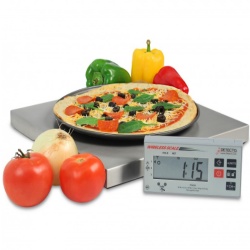Discover how to manage pizza ingredient costs without skimping on flavor. This practical guide breaks down the prices of dough, cheese, and toppings, and provides actionable tips for cost-conscious pizza enthusiasts or business owners. Dive into an analysis of ingredients expenses and uncover strategies to optimize your pizza-making budget.
Key Takeaways
-
Ingredient costs for pizza vary widely with dough varying per pizza and toppings like muenster cheese and meat being costlier than vegetables with significant markup rates.
-
Minimizing pizza ingredient costs involves selecting cost-effective ingredients, buying in bulk while managing storage, and using technology, such as ingredient scales for consistent portioning.
-
Pizza profitability is influenced by managing food and operational costs. Most pizza restaurants can make a decent profit, and with strategies like smart inventory management, supplier negotiation, and portion control, can possibly increase profits and assist with cost reduction.
Breaking Down the Basics: Pizza Ingredient Costs Explained

Navigating the realm of pizza expenses is akin to embarking on a grandiose voyage through various components, each contributing its own distinct taste to the price structure, much like the ingredients in a deliciously crafted pie. The type and amount of ingredients used as well as the size of the pizza can all impact its cost.
Feeling overwhelmed? Do not worry, we are here to provide guidance through this complex world of costs!
The Price of Perfect Dough

The foundation of a pizza is its crust. This wide range of pizza crust costs can be attributed to the various ingredients used in making the dough, such as high gluten flour, sea salt and yeast. These ingredient prices have a significant impact on the total cost of creating the perfect crust for your pizza. (At CCS we’d recommend checking out a bakers scale and scale scoops). Larger pizzas require more dough and result in higher ingredient costs – so don’t forget that when you order an extra large size!
Sauce Economics
Shifting our cost analysis to the sauce component of pizza, we find that a key factor in creating a delicious pie is often the quality of its tomato sauce. Various factors such as ingredient quality and market fluctuations can significantly impact the costs associated with this crucial element.
One little-known tip is that store-bought options for pizza sauce can be more budget-friendly compared to homemade versions which use premium ingredients. Despite potentially not being as high-quality, these mass-produced sauces are still a wise choice for those looking to keep their overall pizza expenses at bay without sacrificing taste.
Cheese, Please: Mozzarella and Beyond

Now, let’s focus on the main element of any pizza, cheese! While there are various types of cheese that can top a pizza such as smoked provolone or parmesan, mozzarella is considered to be the most popular. Due to its increasing wholesale price, cheese has also become a costly ingredient. The cost of producing and storing cheese along with global demand and feed prices for cows all contribute to determining the cost of using mozzarella in pizzas.
So when you take a bite into that deliciously melted fresh mozzarella on your pizza, know that you’re experiencing more than just one type of cheese, but rather an intricate process involving multiple factors influencing its final cost.
Tallying Up Toppings
Next in line, we have the pièce de résistance of pizza, the toppings. Appearances can be deceiving and not all that sparkles is valuable. The expense associated with toppings, especially those containing meat, can add up quickly as they are more expensive than vegetable options.
It’s worth noting that there is usually a considerable markup for pizza toppings – particularly when it comes to large pizzas. This might make you think twice before going overboard with extra toppings on your favorite pie!
Maximizing Flavor While Minimizing Cost
After analyzing the expenses, it is important to explore ways of preserving taste while managing expenditure. Contrary to popular belief, reducing costs does not have to result in sacrificing flavor. It involves making wise decisions, strategic buying, and utilizing technology wisely.
Selecting Cost-Effective Ingredients
Selecting the right ingredients is crucial in making cost-effective pizza. Choosing low-priced options like cheddar or dry mozzarella for your cheese and store-bought sauces can help save money without sacrificing taste. The quality of homemade dough is essential in achieving a perfect crust, so don’t overlook its importance.
When it comes to toppings, affordable yet flavorful choices include onions, bell peppers, mushrooms, tomatoes and fresh basil. For those who enjoy meat on their pizza, consider using sausage or bacon as they are budget-friendly options.
Quantity Control: Saving on Bulk Purchases
Purchasing items in bulk is a clever way to save money. Aside from getting them at a lower price, it also minimizes the need for frequent store visits, which can be time-consuming and tiring. There are certain challenges that come with this strategy, such as handling supply chain problems, ensuring fresh ingredients quality, dealing with shortages of supplies and managing expensive ingredient costs.
Efficient management of space is crucial when buying in bulk. Effective solutions like utilizing heated cabinets for preparing dough, creating vertical storage spaces and properly packaging frozen pizzas either by storing them in air-tight containers or wrapping tightly can help preserve their freshness while maximizing available space.
Harnessing Technology for Efficiency
Technology has become an integral part of pizza kitchens, revolutionizing the way we handle expenses. Take for example the Detecto PZ series ingredient scales that have proven to be a cost-saving tool in pizza production by guaranteeing precise and consistent portion sizes. What sets these scales apart is their unique feature known as Wave-a-Weigh hands-free tare function, simplifying and streamlining ingredient measurement while promoting efficiency in busy pizza establishments.
With wireless capabilities, these advanced scales offer additional convenience by maintaining a clean and organized kitchen environment while expediting preparation time for ingredients.
Crafting Your Own Pizza vs. Dining Out
If you are considering whether making your own pizza would save you money, let’s take a closer look. The cost of homemade pizza can vary depending on the ingredients and type of crust used, but it is less expensive than eating out.
To accurately compare the cost, we need to break down how much it really costs to make a homemade pizza versus dining out at a restaurant. While both options involve spending money on pizzas, there may be significant differences in terms of expenses such as ingredients and crust choices.
The True Cost of Homemade Pizza
The cost of making a homemade pizza can vary widely from a couple of dollars all the way up to $8.00 per pizza or more, depending on the type and amount of ingredients used. Interestingly, preparing your own dough and sauce at home can result in significant savings compared to purchasing them from a store.
For those who take pleasure in creating their own pizzas entirely from scratch, making a homemade version not only allows for customization but also proves to be economical. However, don’t forget to account for the added time it takes to shop for ingredients, prepare the pizzas and lastly… don’t forget to account for the time it takes to clean up the prep area and the dishes.
Restaurant Pizza Pricing: Behind the Scenes
Conversely, opting to dine out at a restaurant will involve additional expenses. To the cost of ingredients, restaurants also have to consider labor costs, rent payments and other operational expenditures when setting prices for their pizzas. Hence, the price you pay at a restaurant not only includes ingredient costs, but also contributes towards covering the overall operating costs of running a business in this industry, resulting in higher prices compared to making homemade pizza from scratch.
Profit Margins and Pizza: The Financial Recipe
Let’s now turn our attention to the financial side of things. The profit margins in the pizza industry vary greatly, much like the assortment of toppings on a pizza pie. They are mainly influenced by food costs, operational expenses, and pricing strategies. On average, most pizzerias earn a decent profit margin each month. Maintaining this balance requires an extensive understanding of both food costs and operating expenses, something we will delve into ahead.
Understanding Food Costs in the Pizza Game
According to various sources, the expenses associated with producing a pizza can vary per pie, depending on its size and the ingredients used. A variety of factors such as food waste, theft, over-portioning, inflation, labor shortages, and rising energy prices all contribute to increasing the overall cost for pizza establishments. Therefore, it is not only about ingredient costs but also their efficient utilization that impacts total expenditures in this industry.
Operational Expenses: More Than Just Ingredients
The costs for running a pizzeria, also known as operational expenses, include various business-related expenditures such as labor, rent and equipment maintenance. These expenses are crucial to the smooth operation of any pizza-making establishment.
One notable expense is that of labor costs in pizzerias. Another significant cost is rent. Keeping necessary pizza-making equipment well-maintained requires spending money on regular upkeep and repairs which add to the overall operational expenses.

Tips for Reducing Pizza Ingredient Costs
Managing costs can seem daunting, but there are several strategic methods that can greatly reduce the amount you spend on pizza ingredients. These tactics include efficient inventory control, negotiating with suppliers for better prices, and implementing portion management.
Let’s take a closer look at these strategies.
One way to cut expenses is by effectively managing your inventory. By keeping track of your supplies and only ordering what you need when you need it, wastage and overstock can occur.
Smart Inventory Management
Efficient inventory management techniques can prevent excessive ordering and maintain cost control. Strategies such as arranging stock, establishing automatic reorder thresholds, and utilizing specialized software can effectively oversee your inventory.
It is crucial to strike a balance in ordering to avoid hoarding excess supplies while also guaranteeing that you do not run out of necessary items.
Negotiating with Suppliers
One way to significantly reduce ingredient costs is by negotiating with suppliers. It can be advantageous to request quotes from multiple sources in order to find the best prices for high-quality ingredients, and then leverage bulk purchases as an opportunity for negotiation.
Building a strong relationship with suppliers and demonstrating trustworthiness can also lead to favorable terms. Highlighting how your business adds value to the supplier may encourage them towards more beneficial deals. By taking these approaches, businesses have found success in lowering their overall costs while maintaining quality ingredients that ultimately contribute positively towards profit margins.
Implementing Portion Control
Implementing portion control is an effective method to decrease waste and maintain consistency when making pizza. By utilizing tools such as the Detecto PZ series ingredient scales, accurate measurements can be ensured, which prevents unnecessary use of ingredients and help maintain consistent taste and quality.
To reduce food costs by preventing overuse of ingredients, implementing portion control also allows for precise serving sizes. This is beneficial in catering to customers who prefer smaller portions and ultimately contributes towards better financial results for the business.
Summary
We have journeyed through the world of pizza costs, from understanding the costs of individual ingredients to exploring strategies for reducing costs without compromising on taste. The key takeaway? Managing pizza costs is an art and science, combining clever strategies, smart choices, and a deep understanding of costs. So whether you’re a pizzeria owner looking to increase your profit margins, or a pizza lover wanting to craft your own delicious pie at home, this knowledge will undoubtedly lead you to create the perfect pizza – both in taste and cost!
Frequently Asked Questions
What are the typical pizza ingredients?
Pizza usually consists of ingredients such as olive oil, flour, yeast, mozzarella cheese, white sugar, peperoni, tomatoes, and onions. Cheese is typically one of the most expensive ingredients.
How can I reduce the cost of pizza?
One way to cut down on the cost of creating pizza is by opting for less expensive cheese, ready-made sauce from the store, and affordable toppings. Making your own dough and sauce at home can also be a money-saving alternative.
How can I reduce the Ingredients costs and still have a great pizza dough and pizza?
Use a portion scale. We recommend the Detecto PZ ingredient scale or the Doran 7000XL stainless steel scale. Also we strongly recommend putting in a camera system which overlooks the ingredients area and the washdown scale area. This way restaurant owners can monitor the the ingredients as they are placed on the pizza dough and you can monitor the scale in case it gets damaged for some reason.
We hope you enjoyed this article about pizza crust, ingredients, and the various ways this can be managed. If you need buying assistance be sure to contact customer service for our help.

